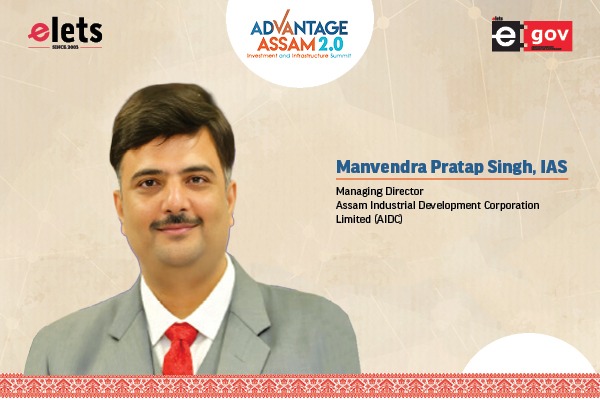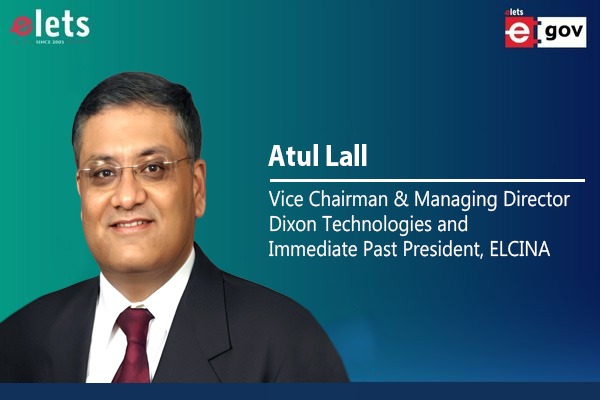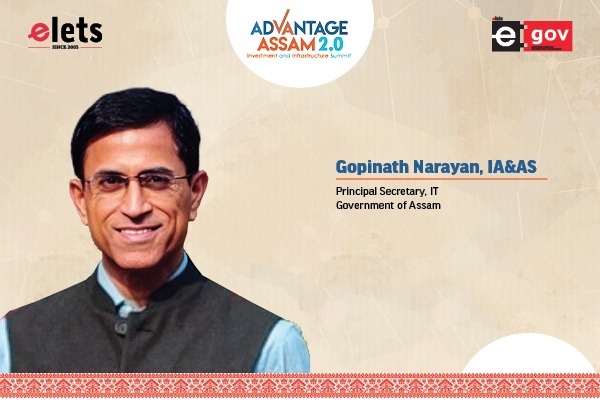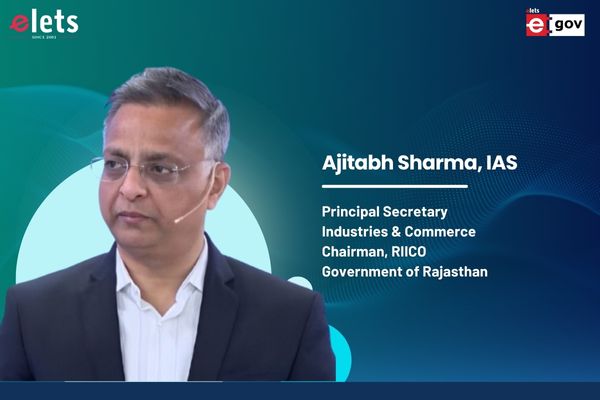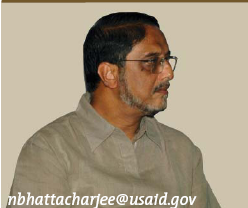 “Municipalities have signifi cant citizen interactions as they provide a large number of basic civic services to millions of citizens living in urban areas. Hence, introduction of e-Governance, on a massive scale, in municipalities would lead to better services and ‘good governance,” says Nabroon Bhattacharjee, Urban Team Leader and Program Manager, Offi ce of Economic Growth, USAID, in an interview with egov magazine.”
“Municipalities have signifi cant citizen interactions as they provide a large number of basic civic services to millions of citizens living in urban areas. Hence, introduction of e-Governance, on a massive scale, in municipalities would lead to better services and ‘good governance,” says Nabroon Bhattacharjee, Urban Team Leader and Program Manager, Offi ce of Economic Growth, USAID, in an interview with egov magazine.”
What is the goal and vision of Indian government’s initiative on urban e-Governance? What has been the role of USAID in designing the Mission Mode project on urban governance?

The Mission Mode Project for e-Governance in Municipalities is one of the State Mission Mode projects under NeGP. Municipalities have signifi cant citizen interactions as they provide a large number of basic civic services to millions of citizens living in urban areas. Hence, introduction of e- Governance, on a massive scale, in municipalities would lead to better services and ‘good governance’. It is also envisaged that this project would also provide a major fi llip to the urban reform programme that has been initiated by the Ministry of Urban Development (MoUD), Government of India.

‘The vision for the National Mission Mode Project for e-Governance in Municipalities (NMMP) is to leverage the ICT opportunities for sustained improvement in effi ciency and effectiveness of delivery of municipal service to citizens.’

The key objectives of e-Governance initiative include the following:

- Provide single window services to citizens on any time,anywhere basis;
- Increase the effi ciency and productivity of Urban Local Bodies (ULBs);
- Develop Single and integrated view of ULB information system across all ULBs in the state;
- Provide timely and reliable management information relating to municipal administration for effective decision making; and
- Adopt a standards-based approach to enable integration with other related applications.
It was decided that in order to comprehensively conceptualise, design and implement the NMMP, an assessment of various initiatives already on the ground should be carried out so as to draw upon lessons from the various initiatives and plan to systematically integrate and build upon the various components and lessons from these initiatives. USAID-FIRE project supported MoUD in carrying out the assessment in four states (Andhra Pradesh, Karnataka, Tamil Nadu, and Maharashtra) and seven ULBs (Hyderabad, Bangalore, Trichy, Coimbatore, Vizag, Kalyan and Mumbai). The assessment highlighted that, preparing the ULBS for fundamental change, re-engineering core business processes, creating integrated databases and the capacity to manage information are prerequisite for taking up e-Governance as a national level initiative.
Further, in order to comprehensively conceptualise, design and implement the NMMP, USAID supported in the design of the NMMP The design covered four major aspects: Programme Design: Defi nes institutional / organisational and implementation arrangements including the fi nancial arrangements.
Functionality of e-Governance Modules: Defi nes the generic functionality of e-Governance modules which may be customised at state level depending on the local needs and suggesting/redesigning process improvements.
Design e-Governance Architecture: Defi nes broad e- Governance architecture for effective implementation in terms of application software, infrastructure software, hardware, infrastructure components, etc. Also discusses Standards, Guidelines and Recommendations for data/database, security, privacy, software architecture, technology infrastructure, disaster recovery, local language, integration technologies, etc.
Program Implementation and Management: address key components such as organisational aspects, tools for implementation and support arrangements for implementation and sustainability.
The broad recommendation of the design was:
- Single application for state-wide implementation for effi cient and fast integration between the application modules
- Web enabled application for delivery of the services
- Application should support n-tier architecture
- Integration with the Government of India initiatives such a state wide area network, Common Service Centre, National Urban Information System, etc.
- Development of a single and integrated view of ULB information across all ULBs within the states
Based on the design USAID FIRE project helped in formulating the scheme on e-Governance in municipalities. USAID FIRE project also helped during the approval process of the scheme, Planning Commission and Cabinet Committee on Economic Affairs. USAID also assisted in preparing draft guidelines for the scheme, Empanelment of Software Vendors and preparation of draft RFP for selection of National Level Consultant.
Could you please tell us about any success story in terms of improvement in effi ciency and effectiveness of service delivery of urban local bodies both from the point of view of government and citizens?
During the last few years in India there have been major initiatives among different state governments and urban local bodies towards ushering in Information Technology and its tools in the functioning of Government. There are striking examples of e-Governance initiatives in the delivery of basic services including health and education; social services including pension, registration of licenses and certifi cates; rural services, like the accessing of land records; services in the agricultural sector that include weather forecast and information.
Several State Governments and urban local bodies have taken various innovative steps to promote e-Governance and have drawn up a roadmap for IT implementation and delivery of services to the citizens on-line. The applications that have been implemented are targeted towards providing services with emphasis on use of local language. The emphasis has been on providing better services to citizens and in improving the internal productivity.
The major areas covered by e-Governance initiatives are:
- Public grievances: Facility to lodge their complaints and grievances through the web site. The unique point here is that the citizens have full access to the entire process of the disposal of the complaints.
- Social Services: Provides information regarding birth and death certifi cates that citizens can access this information easily and are also able to get these certifi cates online.
- Utility payments: Access to information pertaining to their property assessment, and view the calculations that have gone into it; facility of submitting the building plan applications and water tap applications.
Some of the successful projects are e-Seva in Andhra Pradesh, Setu in Maharashtra, Bhoomi in Karnataka , Citizen Service Centers in Vizag and Kalyan etc.
What are the key challenges in achieving the set goal? How are these being planned to overcome?
Evolution of e-Governance is a highly complex process requiring provision of hardware, networking, and software and re-engineering of the procedures for better decisionmaking. Re-engineering of the existing government processes and procedures is essential to bring about transparency in working, reducing bureaucratic controls, increasing effi ciency and productivity, reducing cost of service delivery etc. Successful implementation would also depend upon organisational leadership and capacity (including the capacity to lead and manage change and to re-engineer major business processes). Therefore, preparing the organisation for fundamental change, re-engineering core business processes, creating integrated databases and the capacity to manage information are pre-requisite for scaling up e-Governance as a national level initiative.
What are some of your future initiatives planned in leveraging ICT for improvement in delivery of municipal services to citizens?
ULBs will implement their e-Governance initiatives in waves. Wave 1 (Raise Visibility); This wave of services aims to quickly raise the visibility and image of municipalities by establishing a professional and effective web presence. Wave 2 (Build Critical Transactional Services); This wave seeks to establish the core transactional services required to support the key customer segments and focuses on the services essential for effective customer relationship management and common transactional services. Wave 3 (Sustain Value); This wave aims to sustain the value delivered to municipalities/ULBs and their customers through implementation of additional critical transactional services. Services implemented as part of this wave generally possess low customer visibility.
For ensuring timely execution of the project 2.5% of the total project cost has been earmarked for providing training and capacity building of personnel responsible for the project and elected representatives This will be the fi rst step towards implementing urban e-Governance.
The implementation under NMMP is to be completed within a period of fi ve years coupled with the need to cover as much population as possible and as early as possible. In the First Phase (Year 1) 35 municipalities have been included. The 35 municipalities have been selected as they have more than 1 million populations and cover a large proportion (approximately 20%) of India’s urban population.
Be a part of Elets Collaborative Initiatives. Join Us for Upcoming Events and explore business opportunities. Like us on Facebook , connect with us on LinkedIn and follow us on Twitter, Instagram.
"Exciting news! Elets technomedia is now on WhatsApp Channels Subscribe today by clicking the link and stay updated with the latest insights!" Click here!




